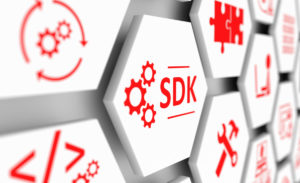5 Simple Techniques to Avoid Bugs While Programming
Programming is an activity that requires a special set of cognitive skills. While the industry has developed processes and tools to ensure the quality of software artifacts, the act of writing code is a craft in itself. Developers pride themselves on the “big picture” results they achieve, but the activity of programming is definitely a humbling experience: it’s easy to introduce bugs, and regardless of whether I catch them right away or later in the pipeline, I hate to be reminded I am inherently flawed and have introduced a defect. For this article, I will focus on simple methods to avoid bugs, not before or after you write code, but while you write that code.
The Right Tools to Develop with the IVAAP Backend SDK
One of the unique features of the IVAAP backend SDK is that you can develop your own data connectors and services with the IDE you are already familiar with. The data backbone of IVAAP is meant to be deployed in a cluster made of multiple nodes for scalability and reliability. However, despite the distributed nature of such a deployment, our SDK requires no particular plugin to compile or execute your code. The tools needed to develop a plugin for IVAAP’s backend are identical to the tools you would need to develop classic Java Servlets: a Java SDK (Oracle, OpenJDK), an IDE (Eclipse, NetBeans) and an application server (Tomcat, Glassfish).
How to Empower Developers with à la Carte Deployment in IVAAP Upstream Data Visualization Platform
IVAAP was not just meant to be a web application “built for purpose”—we wanted it to be a platform that customers can extend on their own. With this goal is mind, the first component that we picked for IVAAP’s architecture was a “lookup” system. This system makes IVAAP easy to learn, yet versatile, and devops appreciate that they can leverage it when a fast turnaround is needed.
What We Learned about the Future of NetBeans from the Last 2 Years
It’s been two years since Oracle announced the donation of the NetBeans source code to the Apache software foundation. This move was much more than a licensing change — it was a bit of a new beginning for NetBeans. With the release of NetBeans 10, now is a good time to look back and recognize the changes that this transition to Apache brought.
Using Scopes in IVAAP: Smart Caching and Other Benefits for Developers
The purpose of IVAAP’s backend is to access data from many data sources and present this data in a unified manner to the IVAAP HTML5 client. Performance is key, and some data stores are faster to access than others. In a web service configuration, a smart caching strategy is required so that the same web/HTTP calls are not made to the same data store twice while a service request is being fulfilled, regardless of its complexity. This is where the concept of scope comes in.





